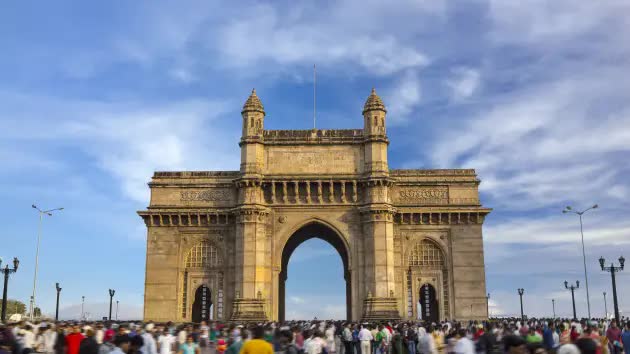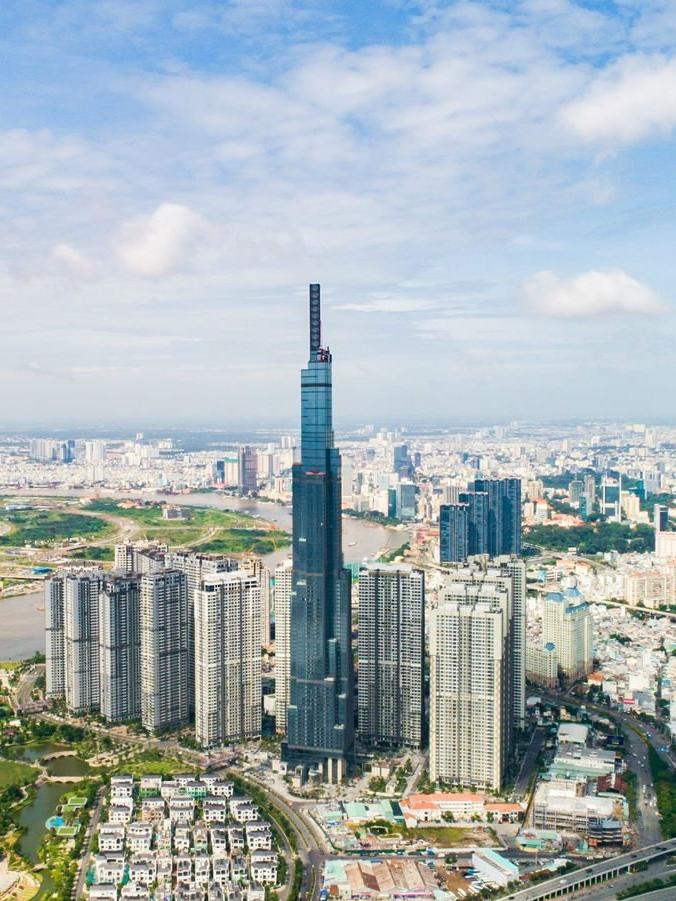Domestic tourism increased sharply
According to CNN, currently, Indian people are willing to spend a lot of money on tourism activities and research shows that the demand for domestic travel in this country is increasing sharply.

The world-famous India Gate in Mumbai was built in the 20th century. Photo: Getty Images
According to Booking.com and McKinsey, Indian travelers will take about 1.7 billion leisure trips by 2022, but only within the domestic travel range. Outbound travel accounts for only about 1%.
For foreign travel, about 1% of Indians often choose cities such as Dubai, Bangkok, Singapore, London, Ho Chi Minh City, Paris (France), Ubud, Hanoi (Vietnam), Phuket (Thailand) and Kathmandu (Nepal) as popular destinations in recent times.
By 2030, Indian tourists are expected to make about 5 billion trips, of which 99% will be domestic, the October report said. The world’s most populous country also aims to become the world’s fourth-largest tourism spender by 2030, amid a growing middle-income population and a projected increase in household income of $35,000 a year by then.
According to global management consultancy McKinsey, because the population is young with a median age of 27.6 – “10 years younger than most major economies” – consumption of goods and services, including entertainment and leisure, is forecast to double by 2030.
The report also noted that spending on travel and tourism is expected to reach $410 billion - up more than 170% from $150 billion in 2019.
According to the 'Travel India 2023' report, around 2,000 Indians and 42,000 global travelers aged 18 to 54 have booked leisure trips in 2022 and plan to take similar trips this year.
New Delhi, Bengaluru, Mumbai and Chennai have retained their positions as top destinations since the study in 2015. Meanwhile, Kochi is the only new city to the list.
“India’s tourism ecosystem is maturing and the government is also planning to make the country more connected and ensure it develops as a tourism hub,” said Kanika Kalra, managing partner at McKinsey Mumbai.
India's small cities are gaining traction
The top 10 most visited Indian cities in recent times are all densely populated destinations but travel trends may soon change.
More and more Indians are looking to explore smaller urban areas, including those in Tier 2 or Tier 3 cities, Ms. Kalra said, adding that Kochi is now a popular Tier 2 city for tourists.
According to India Briefing, tier 2 cities in India are those with a population between 50,000 and 100,000 people while cities with 20,000 and 50,000 residents are classified as tier 3 cities.
Apart from international cities like the capital New Delhi and Mumbai, cities like Jodhpur, Dharamshala, Bodhgaya, Bilaspur, Kodagu and Raipur are also attracting the attention of international hotel chains looking to gain a share of India's booming tourism industry.
Deepak Rao, Director of Revenue Management at Hyatt Hotels in India and Southwest Asia, said branded hotels are now focusing on tier-2 cities for expansion due to growing business opportunities and growing demand for standard services from travelers.
French hotel chain Novotel opened its doors to tourists in Jodhpur in May while Radisson Hotel Group announced in June that it would start welcoming visitors to Raipur by 2025.
The report also found that around half (52%) of hotels in Tier 2 and Tier 3 cities will be branded by the end of 2023 – up from 27% in 2015.
Mckinsey's Ms. Kalra attributes the growing interest in traveling to India's smaller cities largely to the ongoing transport infrastructure push.
In its annual budget in February, India's finance ministry said it plans to increase capital spending by 33% to 10 trillion rupees ($120.96 billion) as the country prepares to become the second-largest economy by 2075. The report noted that Indian airlines have ordered more than 1,000 new aircraft, bringing the total to between 1,500 and 1,700 by 2030.
“So we are seeing a significant change in the landscape and are seeing a new wave of tourists coming to smaller cities and towns,” said Kalra./.



































